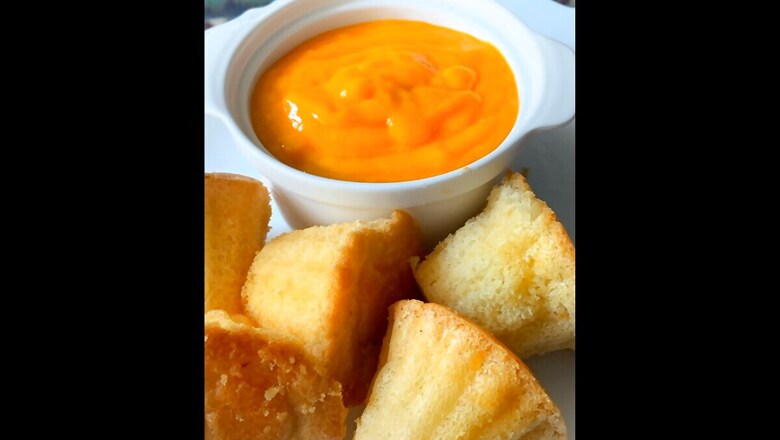
views
In the midst of the curfew and lockdown, within the limited morning hours of business, in the Dadar area, close to where I live, not only fruit-sellers, but even clothes shops, sanitary-ware shops, cycle repair shops, aluminum-ware shops, lumber shops, marts whether closed, defunct, leased, rented or owned, are lined with warm hay and stocked with cartons, boxes and cases of mangoes, albeit with half their shutters down. Even police vans on sorties look the other way, as brisk business is done discreetly and efficiently, as only Mumbai can. Even the delivery networks of same-day-couriers, food aggregators, and online shopping platforms are chock-a-block with the demand for the King of Fruits. It’s mango season and this is the one golden lining amidst these dark clouds.
Mangoes, as a matter of fact, start making an appearance in the markets of Mumbai around February-March. They are rare and expensive, each mango sometimes costing over Rs 150 but I, for one, am in no hurry. I like to wait for the season to really kick in. For some reason, the mangoes taste better in April and May, maybe because that’s when they are meant to ripen naturally.
Know Your Alphonso
India has a variety of mangoes, each with their subtle differences in shape, colour and taste. But the king of all mangoes is the Alphonso. This variety is named after Afonso de Albuquerque, a Portuguese nobleman and military expert who helped establish the Portuguese colony in India. It was the Portuguese who introduced grafting on mango trees to produce varieties like Alphonso.
Also called Hafoos, Hapuz or Aapoos, the Alphonso is oval and can vary from four to six inches. The Alphonso mango is often red in colour, and shows gradients of yellows and greens. The pure yellow mango is often ripened unnaturally. The sweet natural aroma of a genuine Alphonso mango will fill a room. In fact you should be able to smell a real Alphonso from a mile. They should feel soft to touch, with silken skin, not wrinkled. Often people mistake a wrinkled fruit for a naturally ripe mango. That is far from the truth. All mature Alphonso mangoes develop a slight dimple just below the stem, small enough to hold a drop of water or stop it from sliding down. Of course, there are many kinds of mangoes, but the Devgad Alphonso is the most coveted.
The Season of Aamras
For me, the season really gets underway when local ice cream makers announce that their fresh mango ice cream is ready and all the Gujju thali joints add Aamras Poori on their menus. Fresh mango ice cream, when it’s hand-churned, creamy, with chunks of real mango, not just pulp, is glorious. Any other year, fruit juice stalls would be lined up with cars, with waiters balancing beer mugs filled with frothy fresh mango milk shake and oversized glass bowls of fresh mangoes, some with ice cream and some just with cream, feeding a flurry of orders by the score.
Aamras Poori is actually an odd combination. A chilled sweet fruit pulp eaten with hot, deep-fried savoury pooris. But someone, back in the day, decided it was a good idea, and it works. I like my aamras, just as it is, as chilled pulp, but others may add a few ingredients to theirs. For example, Aamras in a Maharashtrian household is often flavoured with cardamom powder, while the Gujaratis may sprinkle their Aamras, or ‘Keri no Ras’ as they call it, with dry ginger powder (soonth) and top it with ghee. Rajasthani restaurants often add a bit of milk to smoothen the pulp, with a little saffron infused while blending the mango.
At our home, we like our Aamras ideally made from squeezed Payari mango. The Payari mango also hails from the Ratnagiri-Devgad belt on the western coast of Maharashtra and is a greenish mango but golden yellow inside. It is not as sweet as the Alphonso but much juicier. Ideally, a mix of Alphonso and Payari mangoes make the perfect Aamras. I like to eat our Aamras with home-baked sourdough bread instead of pooris. Bread and Aamras is an odd and unusual combination. But it’s not just any bread, it’s called “Parbhi Pav” (from the Pathare Prabhu community), a homemade bread that is soft, buttery and muffin-like. The bread has a strong, sour, slightly objectionable aroma of the homemade yeast while baking, but the end result is just fabulous. A couple of dips of hot bread in chilled Aamras, and it’s like nectar.
Of course, if you think I’m making too much fuss over Aamras, just cut a slice of a golden Alphonso and devour it, or massage a green Payari till tender, then nip the pip and put it straight into your mouth. If there is indeed a heaven, it is right here on earth.
Read all the Latest News, Breaking News and Coronavirus News here. Follow us on Facebook, Twitter and Telegram.













Comments
0 comment